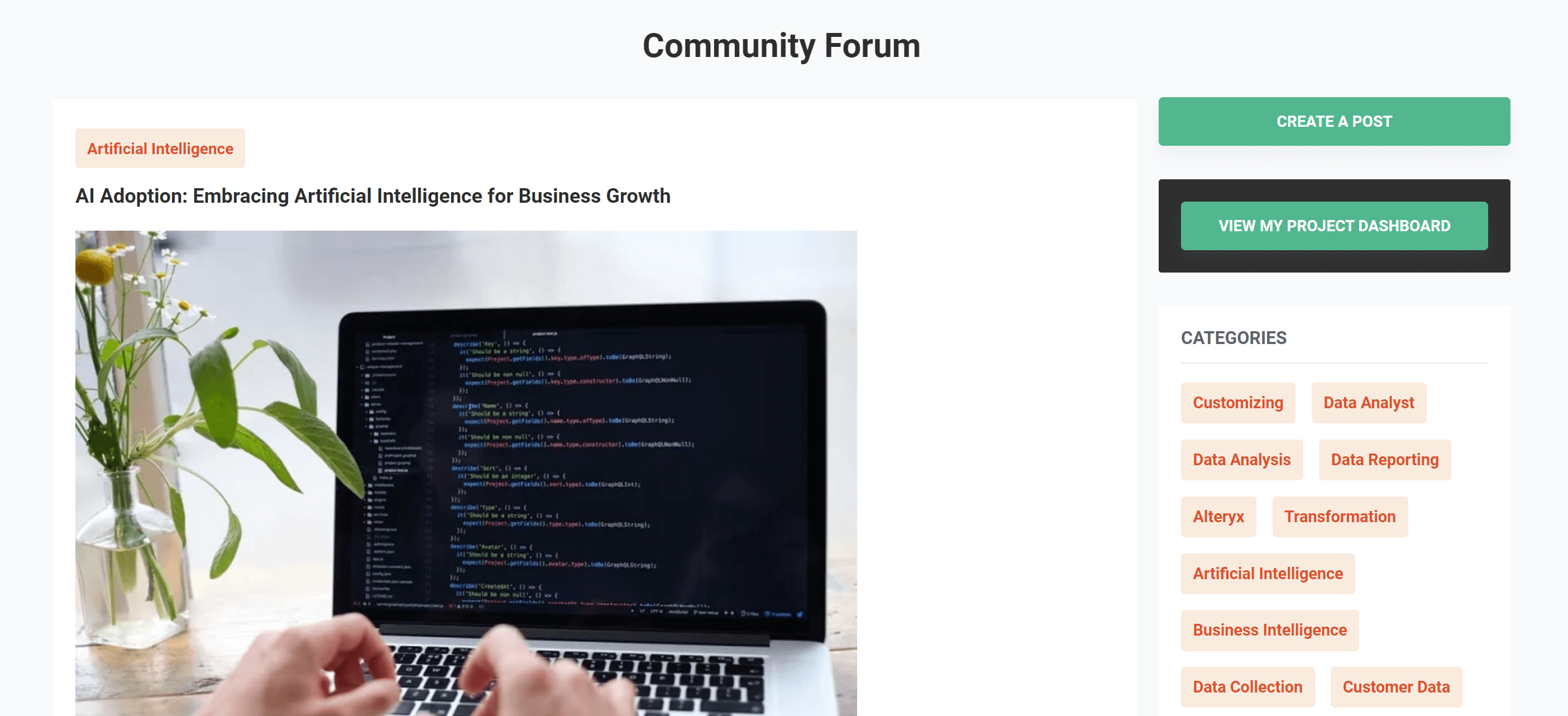What is Data Science?

One of the most powerful tools available in business today is the information gathered from the accurate analysis of big data and this is where data science comes in.
Data science is a field of study in which scientific methods or techniques are used to extract insights from relevant data by using modern-day tools or platforms.
Data Analysts are able to broadly inform decision making, but when a specific problem arises, it’s a Data Scientist that is called on to communicate with the business leaders and shareholders in order to analyse and solve the problem.
The methodologies employed by Data Scientists are slightly different to those used by Data Analysts, and demand for the role is increasing. Forbes and Glassdoor both expect demand for Data Scientist to increase 28% by 2026, which means that a Data Scientist can expect career longevity and durability. Within this article, we will take a deeper look at the role of a Data Scientist, their responsibilities and some helpful tools.
Data Scientists’ Scope of Work
Data Preparation
The Data Scientist follows the same process each time, regardless of the problem at hand. This enables reliable, consistent and comparable results.
1. Defining the Business Problem
The Data Scientist meets with the managers to define the problem. “Why” is the key question that should be asked here, again and again, to ensure the problem is communicated and understood effectively.
2. Data Acquisition
Data acquisition occurs when data is taken from multiple raw sources; logs, API’s, online depositories, web servers, flat-files and databases.
The data is then integrated and transformed into a homogenous format. What is created through this is a ‘data warehouse;’ a single source of truth, from which data can easily be extracted for present or future uses.
This is also known as ‘ETL’ (helpful tools for this process are listed below).
3. Data Preparation
Approximately 60% of a Data Scientist’s time is spent on this stage as data is often “dirty” or otherwise unfit for use. In terms of quality, data must be scalable, productive and meaningful. Here are 5 ways to prepare the business data acquired:
a. Data Cleaning
Poor data leads to inaccurate or failed models, so data cleaning asserts to change that. Missing, null or void values are addressed at this stage, and once it is done, business decisions and productivity are ultimately improved.

The Data Scientist checks the data for duplicates, inconsistencies and misspelled attributes.
b. Data Transformation
Following data cleaning, the Data Scientist will modify the data based on defined mapping rules. Complex transformations can help the data team to better understand the dataset, and specific tools are required for this.
Ultimately, raw data is turned into desired outputs through normalising it. Min-max normalisation or z-score normalisation can be used at this step.
c. Outlier Data Handling
Through exploratory analysis, plots and graphs, a Data Scientist can determine the outliers in a data sequence and work out why they are appearing.
Outliers are actively used for fraud detection.
d. Data Integration
The Data Scientist ensures the processed data is accurate and reliable.
e. Data Reduction
A central repository or ‘data warehouse’ is compiled in this step as multiple sources of data converge into one. This process improves storage capacity, lowers costs and eliminates redundant or duplicate data.
4. Data Mining or Exploratory Data Analysis:
Patterns and relationships are uncovered here, informing better business decisions.
This is the process of understanding how the data should be used in order to solve the problem, and is a vital part of the process.
The Scientist defines and refines their selection of feature variables. These variables will later be used in model development, which is why this step is so crucial. If this is skipped, it may result in the wrong variables being selected and therefore an inaccurate model being created.
5. Predictive Modelling
This is a core activity of the Data Scientist, who repeatedly applies diverse learning techniques to the data to identify the model that will best serve the business’ requirements.
The model is trained using a data training set and tested to ensure the best model for the job is selected.
Model training can either be supervised or unsupervised. Supervised model is used when data is labeled:
a. Regression: This predicts continuous variables and values, and deals with linear algorithms, multiple regression, decision trees and random forest.
b. Classification: It is used for predicting categorical values. Algorithms commonly used include SVM, KNN, logistic regression and Naïve-Bayes.
6. Visualisations and communication

The Data Scientist meets with managers and stakeholders to communicate their business findings and propose the solution.
Data Implementation
Once the cleaning, organisation and analysis of data has been complete – and the go-ahead has been given by the company directors – implementation can occur. This is the step that will launch the project and glean the insight needed in order to solve the problem.
1. Deployment
The proposed solution is retested in pre-production through the planning stage.
Following construction, testing, evaluation and corrections, the final data model is created and then launched into production.
2. Data Engineering
The Data Scientist uses dashboards and reports to view and share real-time analytics with the company. This form of communication is developed to make sharing large amounts of information understandable.
3. Monitoring and Maintenance
The project’s performance is monitored and tweaked as needed, ensuring a smooth and steady operation. Outcomes are then monitored and reported back to the company.
The algorithms set in place within the model sieve through masses of collected data and ultimately solve the business question or problem. There are a vast array of programmes and tools that can help the Data Scientist through these processes, and it is worth investing in the best tools to maximise efficiency.
Data Tools
A wide range of sophisticated tools are available to Data Scientists, and often several tools will be used throughout the entire process. Using the best tools available will improve the efficiency of products, thereby including long-term profitability for both the Data Scientist and client.
There are a great many resources available that will guide you through the tool selection process, however the following are a good place to start:
Data Warehousing:
- Talend Studio
- DataStage
- Informatica
- AWS Redshift
Data Analysis:
- SAS
- Jupyter
- R Studio
- MATLAB
- Excel
- RapidMiner
Machine Learning:
- Spark MLib
- Azure ML Studio
- Mahout
Data Visualisation:
- Jupyter
- RAW
- Tableau
- Cognos
Also read our blog on the Top 7 Business Intelligence (BI) Platforms
We are always welcoming new talent into our freelance databases. Sign up at Pangaea X and select projects to work on today.
Get your data results fast and accelerate your business performance with the insights you need today.



